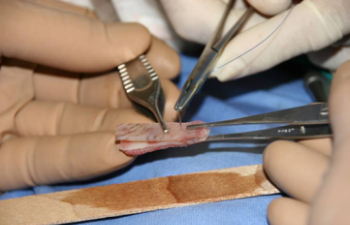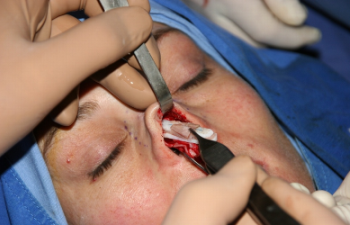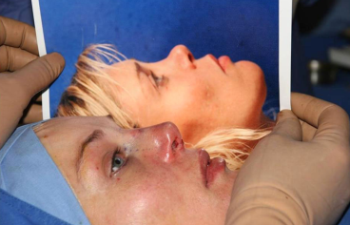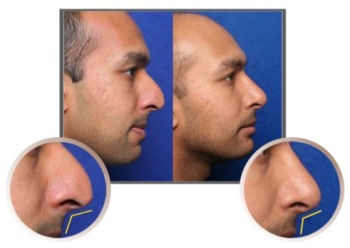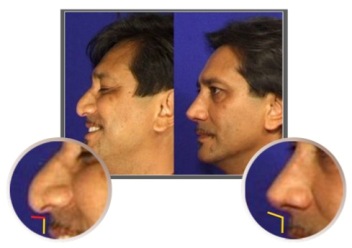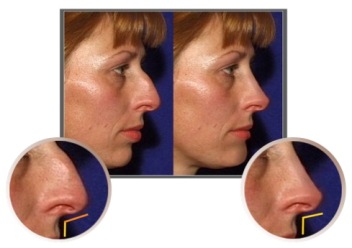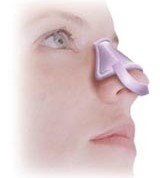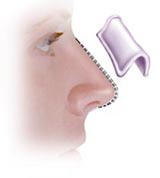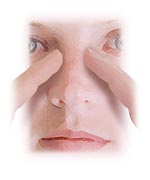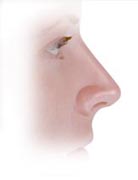THE PURPOSE AND GOAL OF NASAL SURGERY
The purpose and goal of nasal surgery is to refine the shape of your nose, or to improve your breathing; or, when needed, to combine the two procedures into a single operation.
Here’s what you need to know about our procedures
Conscious sedation: a preferred anesthetic approach
We do not hospitalize our patients or subject them to the debilitating side-effects of gaseous general anesthesia. We use a safe and pain-free local anesthetic, a conscious sedation procedure pioneered and perfected for rhinoplasty by our specialist surgical team in the 90’s. It’s now an accepted practice and used internationally. Conscious sedation, sometimes also referred to as ‘regional nerve blocking’ – administered in combination with a mild sedative – will enhance your comfort (most patients doze during surgery), and hasten healing (it reduces blood loss dramatically during surgery and minimizes post-surgical bruising and swelling).
Surgical procedure
We use either the ‘open’ or ‘closed’ approach to surgery depending on the type of procedure and the patient’s skin sensitivity. Some skin may be too thin and sensitive for the open approach. The decision rests with the surgeon in consultation with the patient.
The ‘closed’ approach allows us to execute surgery through the nostrils – intra-nasally. This is ideal for simple procedures like nasal hump removals that take between one-and-a-half and two or so hours, depending on circumstances.
The ‘open’ approach is appropriate for more complex procedures where the surgeon needs more freedom to refine the anatomy, for example, the tip of nose. Starting with a tiny incision at the base of the collumella (the pillar between the nostrils), to conceal scarring, we partially lift the skin of the nose to obtain a clear view of the nasal anatomy. We then pare and shape the bone and cartilage to create the desired improvement. After surgery, we suture the tiny incision; it’s virtually undetectable once the tissue heals. The procedure takes three to six hours.
Hump removals
One of the most common surgical requests at the Nose Clinic, is a hump removal; a normally routine procedure often done with the ‘closed’ intra-nostril approach. But, not all patients actually require a hump removal. We’ve optimized the hump removal procedure by categorizing humps into three groups – a ‘True,’, a ‘Pseudo’ and a ‘Concealed’ hump. A ‘pseudo’ hump, for example, can be resolved with surgery done to improve and define the tip projection of the nose.
Post-operative care
Immediately after surgery, we take you to a quiet recovery room next to the theatre. Within an hour or two, when you feel ready, we discharge you to recover in the comfort of your home, or a nearby guesthouse. Our surgeon will monitor and assess your progress through post-operative consultations; the first, the day after surgery. Minor tissue bruising and a slight discoloration under the eyes usually subsides within five to 10 days, although your nose may feel uncomfortable until we remove the tiny sutures on the six or seventh day. Your nose may feel a little ‘tight’ as healing continues over the ensuing healing period. You may use makeup, if you wish, to conceal the initial swelling and discoloration.
Surgical dressing
We usually brace the nose and nasal bones with an external splint and dressing for the immediate post-operative phase. We rarely use internal nasal splints and packing. If your nose requires packing and splints, we usually remove them within 24 hours.
The ‘magic’ moment
Six or seven days after surgery, we remove the external splint and dressing; an exciting ‘first glimpse’ of the result for both the patient and the surgeon. It’s a magical moment.
Results
The results of rhinoplasty far out-weight the minor discomforts of surgery and post-operative healing. Mild swelling, barely discernible, particularly in the lower third of your nose, may take up to 12 months to disappear. Over this period the contours of your nose will settle into their final shape. Minor, almost unnoticeable areas of local thickness and asymmetry also gradually disappear. None of this not detract from the result.
To monitor progress, we offer our patients free post-operative consultations three to six months after surgery, and again at 12 months.
Your feelings about the result are extremely important; satisfaction is the ultimate measure of surgical success.
Make an Appointment!

